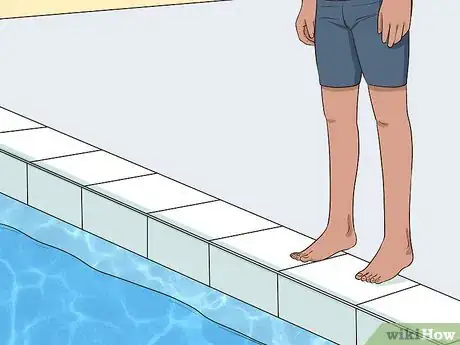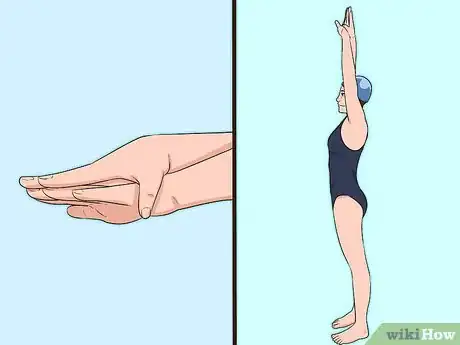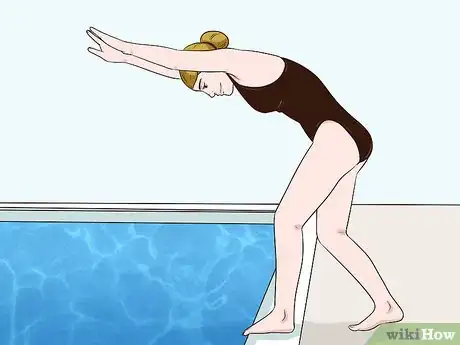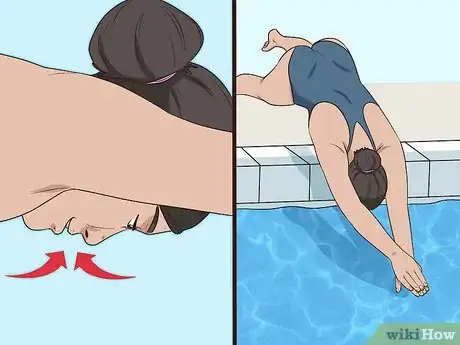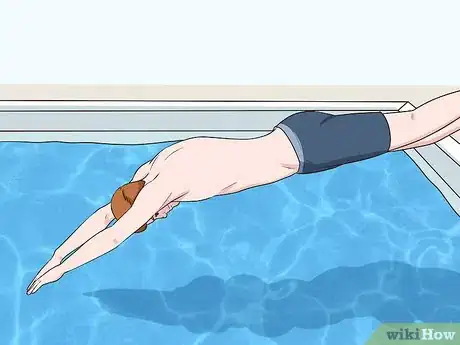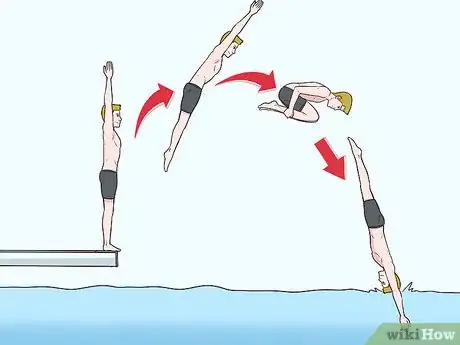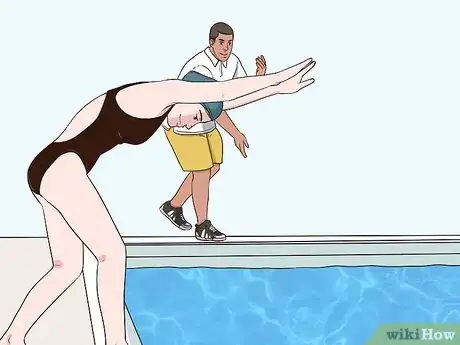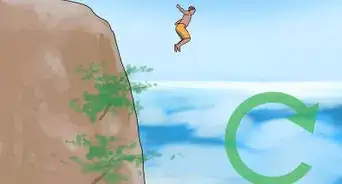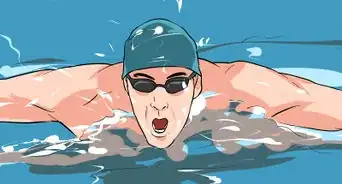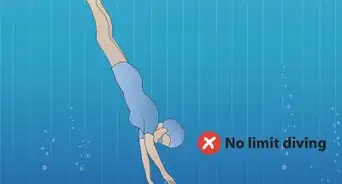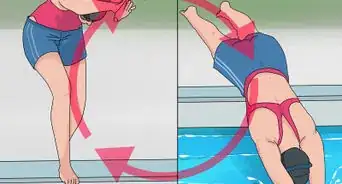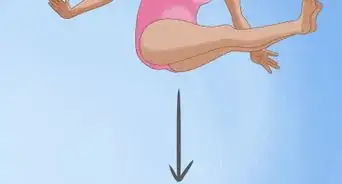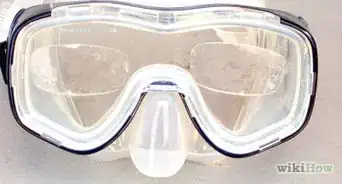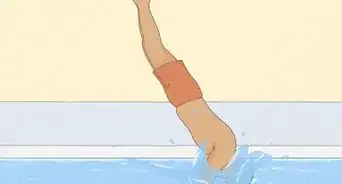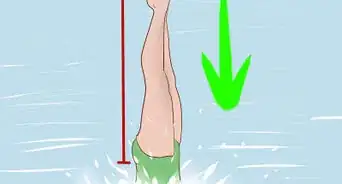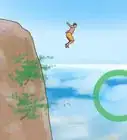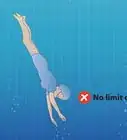X
wikiHow is a “wiki,” similar to Wikipedia, which means that many of our articles are co-written by multiple authors. To create this article, 23 people, some anonymous, worked to edit and improve it over time.
This article has been viewed 22,214 times.
Learn more...
Diving offers a real thrill when you nail an intense dive. From dry land, however, it can be difficult to convince yourself to take the first plunge. Just start small, take a deep breath, and you'll see how much fun it can be. If you enjoy yourself, look for a diving coach — maybe you'll be the next Tom Daley.
Steps
Part 1
Part 1 of 2:
Taking Your First Dive
-
1Start at the edge of the pool. There's no need to start from a diving board, or even a raised stand. Just stand at the edge of the pool's deep end. Always dive from the end of the pool, not the sides.[1]
- It's tempting to start while standing in water, but resist this urge. The water will drag you down as you jump, and you could hurt yourself if you land on the shallow side.
- Make sure no people or objects are in the diving area.
-
2Adopt the streamline position. To do this, place one hand on top of the other, with your palms facing down. Raise your arms straight above your head, so your biceps squeeze your ears.Advertisement
-
3Bend forward. To help with first dive nerves, get your head as close to the water as possible. Crouch if you prefer to take a smaller dive.[2]
-
4Take a deep breath and jump. Try to dive in headfirst if you can. This is scary at first, but it gets easier with every mistake. Every beginning driver starts out with belly flops and stumbles. Once you realize they are not dangerous, your confidence will grow.[3]
-
5Improve your form. Repeat this jump many times, using the same form. Focus on entering the water headfirst and keeping your body straight. Once you can achieve a smooth entry this way, focus on jumping further, or — if you've been crouching — start from a standing position.
Advertisement
Part 2
Part 2 of 2:
Training Your Diving Ability
-
1Find an appropriate place to learn. Visit swimming clubs in your area to find out about their diving classes. To start out, you may prefer an informal club with a relatively large proportion of beginners. Diving schools often focus on competitions, and may not give new divers the attention they need.
- Choose an affordable option so you have the flexibility to change your mind.
-
2Look for a quality coach. Ideally, find a coach with collegiate experience who is still an active diver. Someone with limited competition experience, mediocre diving ability, or poor ability to answer your questions is rarely an effective teacher.
- If you're not sure about your coach's ability, talk to more experienced swimmers for advice, or watch his experienced students dive to see whether they have good form.
-
3Practice the forward tuck dive. The tuck position is a good starting point for competitive divers, allowing them to practice control in the air. Jump from the lowest diving board, then adopt this position in the air:[4]
- At the top of your jump, squat with your knees up against your shoulders, with your head tucked between them. Round your back and shoulders to make yourself as compact as you can.
- At the same time, grasp your legs with your hands just above your ankles. Keep your elbows close in at your sides.
- As you rotate forward, straighten out and enter the water in streamlined position, arms first.
-
4Learn other diving forms. Competitive divers must practice several types of dive. With the help of your coach, practice the correct form for the following:[5]
- Straight jump forward and backward
- Tuck jump forward/backward
- Piked jump forward/backward
- Jump half twist (starting forward/backward)
- Jump full twist (starting forward/backward)
-
5Put in the effort. Having a good coach is important if you want to do well, but you also have to put in a lot of hard work to become a better diver. In addition to actual diving practice, consider watching videos of Olympic divers and analyzing how you could use their techniques.
Advertisement
Community Q&A
-
QuestionIs it possible that I could hit my head on the bottom of the pool when diving?
 Community AnswerIt really depends on the depth of the water that you're diving into. If you're diving into a shallow pool (6 feet or less), then it's very easy to hit your head on the bottom. You should try to dive into water that's 10 feet or deeper. Otherwise, you should try to dive at an angle so you're not as likely to head straight down to the bottom.
Community AnswerIt really depends on the depth of the water that you're diving into. If you're diving into a shallow pool (6 feet or less), then it's very easy to hit your head on the bottom. You should try to dive into water that's 10 feet or deeper. Otherwise, you should try to dive at an angle so you're not as likely to head straight down to the bottom. -
QuestionHow can I stop worrying about diving?
 Community AnswerGet a friend who is an experienced diver to help you, they will encourage you and help you slowly get over your fear.
Community AnswerGet a friend who is an experienced diver to help you, they will encourage you and help you slowly get over your fear. -
QuestionWhat is the tuck jump backwards?
 Bigcatlover1Community AnswerIt would be be called a "back jump tuck." The official diving lingo would be "200c."
Bigcatlover1Community AnswerIt would be be called a "back jump tuck." The official diving lingo would be "200c."
Advertisement
References
- ↑ http://www.divingboardsafety.net/MythBusters.pdf
- ↑ https://www.swim-west.com/10-steps-dive-like-pro-beginners/
- ↑ https://www.swim-west.com/10-steps-dive-like-pro-beginners/
- ↑ https://www.youtube.com/watch?v=9LfEbcUH4R0
- ↑ https://www.teamusa.org/USA-Diving/About-Us/Diving-101/Types-of-Dives
- ↑ https://www.youtube.com/watch?v=tj1uTFets4M&list=PL1222AB1CEFA8D4F4
About This Article
Advertisement
